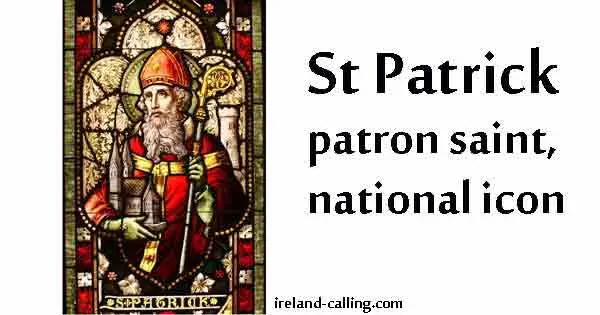Behind every great man there’s a great woman, so they say, and it seems that may well have been true of the revered St Patrick.
Ireland’s patron saint has gone down in history as the man who banished snakes from Ireland and used the shamrock to explain the mystery of the Holy Trinity but very little is known about his personal life.
Now, according to Shane Lehane, a folklorist with University College Cork, it’s quite likely that St Patrick had a wife called Sheelah.
This would not have seemed strange in the 5th century in the way it may now because at that time most clerics throughout Europe were married. Celibacy didn’t become the norm until much later.
Lehane says the idea of St Patrick being married was commonplace in Ireland up until the early 19th century. He told the Irish Independent: “Pre-Famine, pre-1845, if you go back to the newspapers in Ireland they talk not just about Patrick’s Day but also Sheelah’s Day. So I wondered where this came from.”
“You have Paddy’s day on March 17 and it continues on to Sheelah’s day. I came across numerous references that Sheelah was thought to be Patrick’s wife.”
“The folk tradition has no problem with such detail. The fact that we have Patrick and Sheelah together should be no surprise. Because that duality, that union of the male and female together, is one of the strongest images that we have in our mythology.”
The theory is borne out by a reference in a book written in 1806 by John Carr called, The Stranger in Ireland.
Carr writes: “From a spirit of gallantry, these merry devotees continue drunk the greater part of the next day, viz., the 18th of March, all in honour of Sheelagh, St. Patrick’s wife.”
Lehane says the marriage story is particularly interesting from a feminist point of view.
“What I think is very interesting is that people in Ireland in the past had no problem whatsoever accepting that Patrick had a wife.
“The church was very strong and during the period of Lent from Ash Wednesday right through to Easter Sunday you had major prohibitions.
“However, folk tradition was such that Patrick afforded a special dispensation and Irish people were allowed to celebrate Patrick’s day which always fell in the middle of Lent.
“It seems to have been extended to March 18th and was a continuation of celebrations. They continued to drink on Sheelah’s day and there is a sense that the women were more involved in the celebrations on the 18th. So there is a feminist angle in there.”
Lehane believes there may be a connection the story of Sheelah and the ancient, pre-Christian myth of Shelah na Gig.
He said: “Sheela-na-Gig is a basic medieval carving of a woman exposing her genitalia. These images are often considered to be quite grotesque.
“They are quite shocking when you see them first. Now we look at them very much as examples of old women showing young women how to give birth. They are vernacular folk deities associated with pregnancy and birth.”
Lehane believes it is time for people in Ireland to re-acquaint themselves with the story of Sheelah and her importance in our understanding of St Patrick and Irish folk history.
“Sheelah represented, for women in particular, a go-to person because she represented the female.
“The Sheela-na-Gig is a really important part of medieval folk tradition. She is an important folk deity. The figure of Sheelah was perhaps much bigger than suggested by the scant mentions we find in the old newspaper accounts.
“She would have been massively important. She represents a folk personification, allied to, what can be termed, the female cosmic agency, and being such, would have played a major role in people’s everyday lives.
“It is a pity that the day has died out. But maybe we will revive it. I am sure Fáilte Ireland would be delighted with it. I think it would be a great idea.”
It would not be unusual for characters from ancient Celtic folklore to be blended into the modern Christian tradition.
Many of the characteristics of the Celtic goddess Brigid came to be associated with her Christian namesake, St Brigid.
More popular articles and videos
The real life mystery of what Maureen O’Hara whispered to make John Wayne look so shocked
Matt Damon winning hearts and minds with charm assault on Ireland
Action hero Tom Cruise was once attacked by an old man in a Kerry pub
Liam Neeson speaks about his late wife in emotional interview
Dating site explains why Irish men make wonderful husband material
Billy Connolly says public should ignore politicians and listen to comedians
Take a look inside Hollywood star Saoirse Ronan’s stunning Irish home

